The "Big 50"
The .500s moved in fits and starts.
other By: Terry Wieland | May, 25
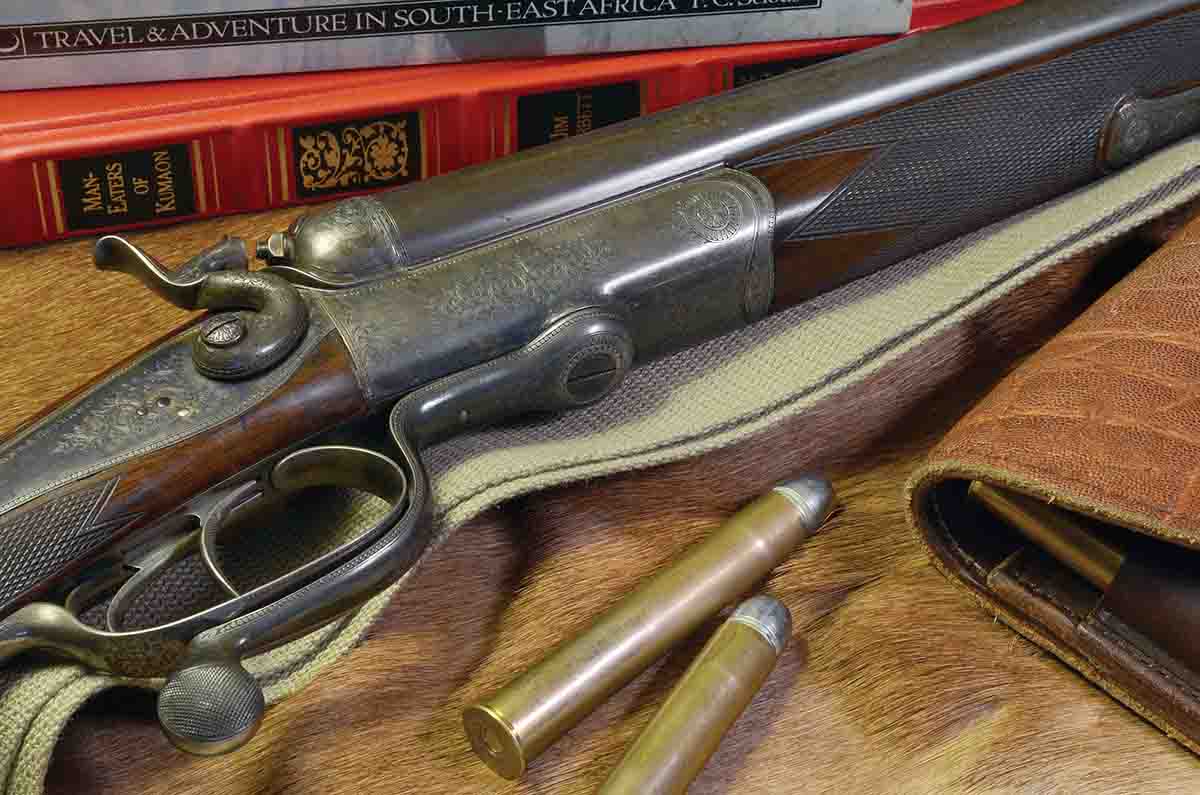
In America, the story of Dixon’s feat added to the already mythical aura that surrounded cartridges of .5-inch diameter. They were called “five hundreds” in England, “fifties” over here, and men who used them had one thing in common: They were guys who knew something about rifles and how to handle them.
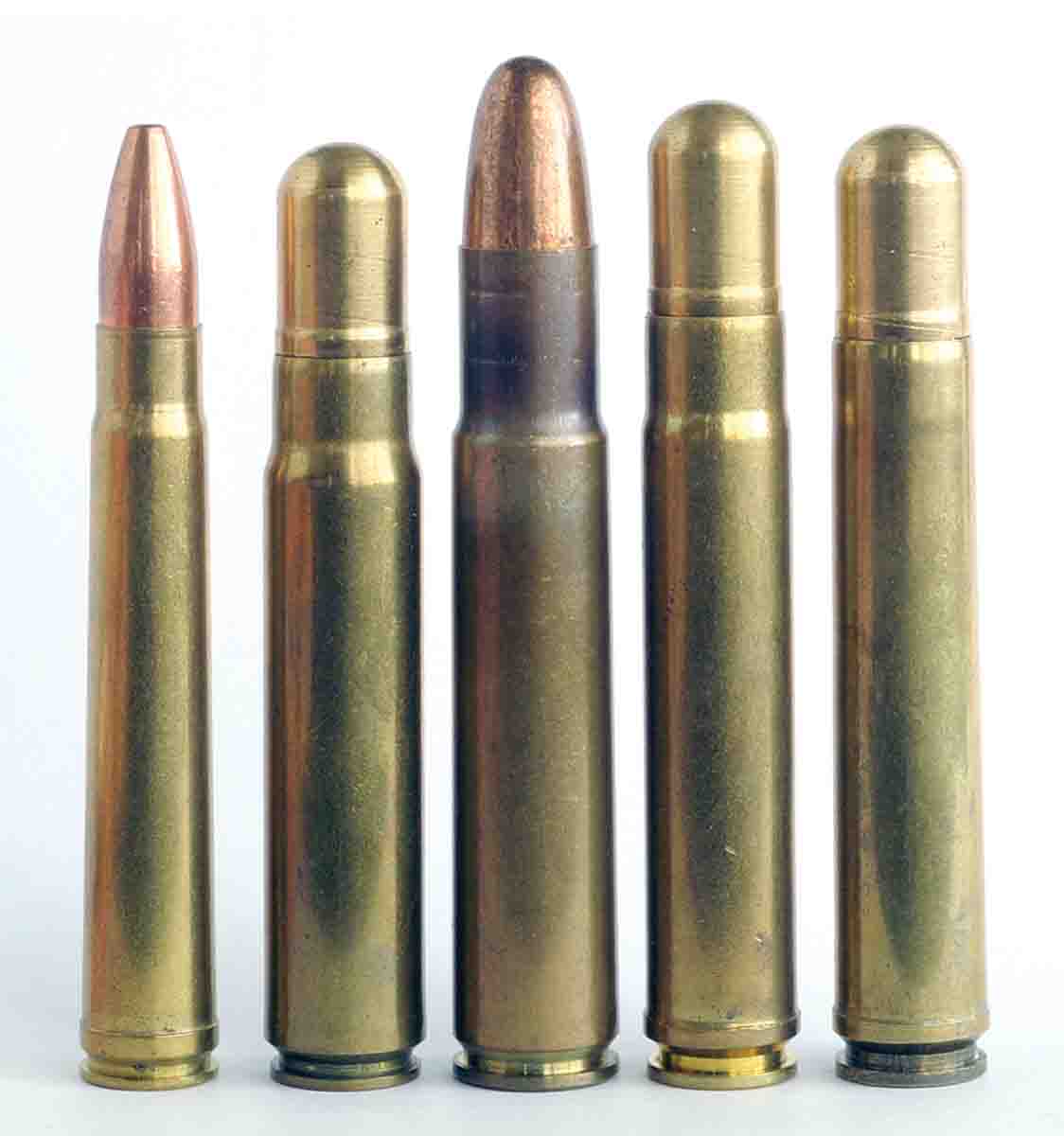
Considering the common use of imperial measurement, rifle bores of .5 inch make eminent sense. During the era of black powder cartridge rifles, there were almost as many .50s as .44s and .45s. There were long ones and short ones, and they fired a wide variety of projectiles, ranging in weight from 300 to 700 grains.
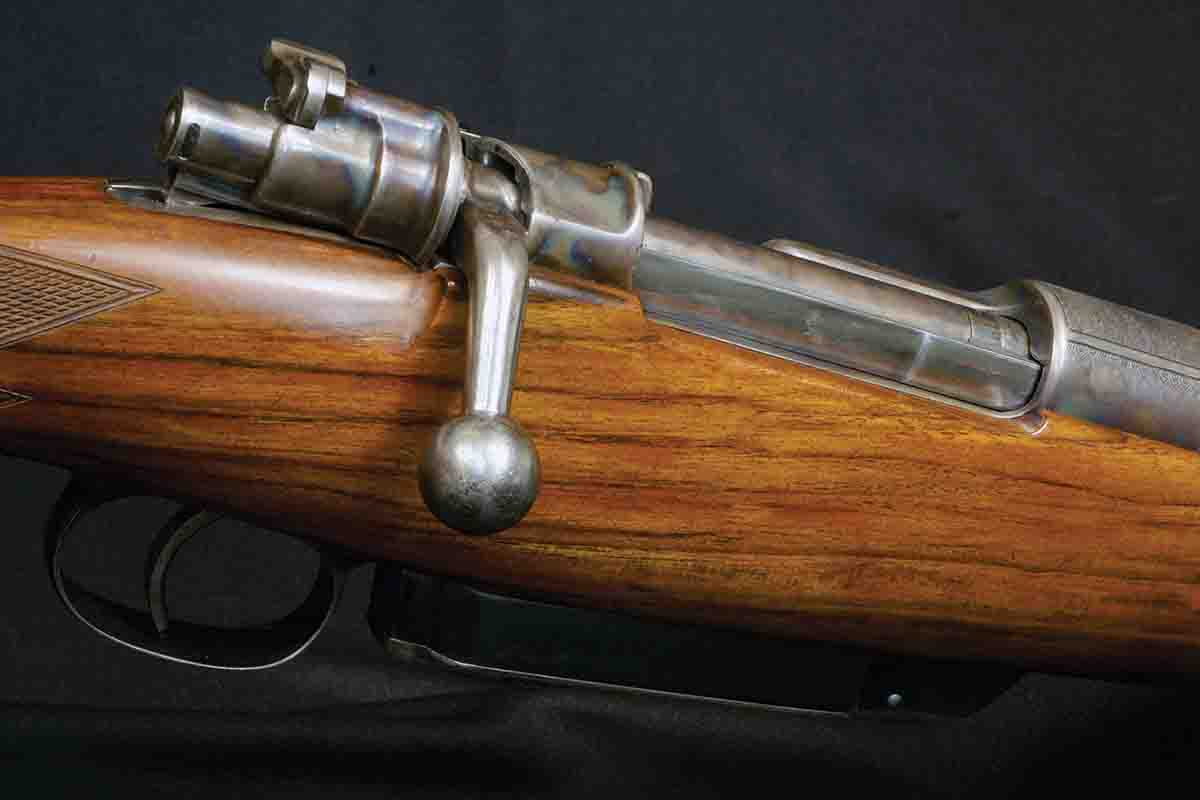
England followed a similar path, except that its interim cartridge was the .577 Snider, replaced in 1871 by the .577/.450 Martini-Henry.
The historical paths of the various calibers then diverged. In England, the .577 was developed into a series of big-game cartridges, both black powder and, later, smokeless. The .500 followed along in much the same way. In America, the .50 was developed into a number of big buffalo cartridges. They were never as numerous or popular as the various .44s and .45s, but they certainly earned respect.
In terms of bison, there is not really much a .50 can do that a .45 cannot, given the way the bison were hunted, because the cartridges were loaded with heavy bullets to comparable velocities. This is not true when we start talking about elephants, lions, Cape buffalo and, in India, tigers.
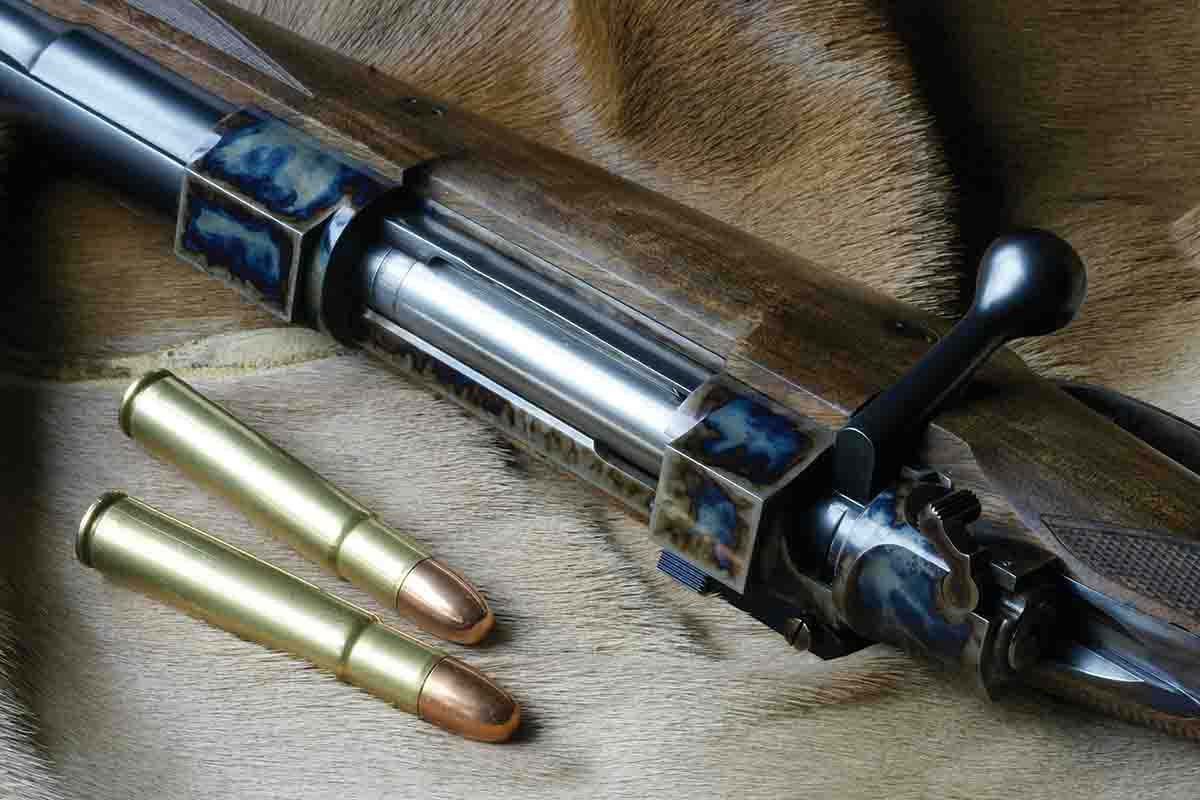
As the British colonized Africa and hunted in India, they developed the world’s finest big-game, black-powder cartridges, and the best of the bunch was the .500 Express 3¼ Inch. This was a straight, rimmed case, 3.25 inches long, the longest of a family of straight .500s, with cases ranging from 2.5 inches up to 3.25. In America, Sharps, Winchester and Maynard did much the same thing. Here, cartridges were not designated by caliber and cartridge length, but by caliber and powder charge. So the American version of the .500 Express 3¼ Inch was the .50-140.
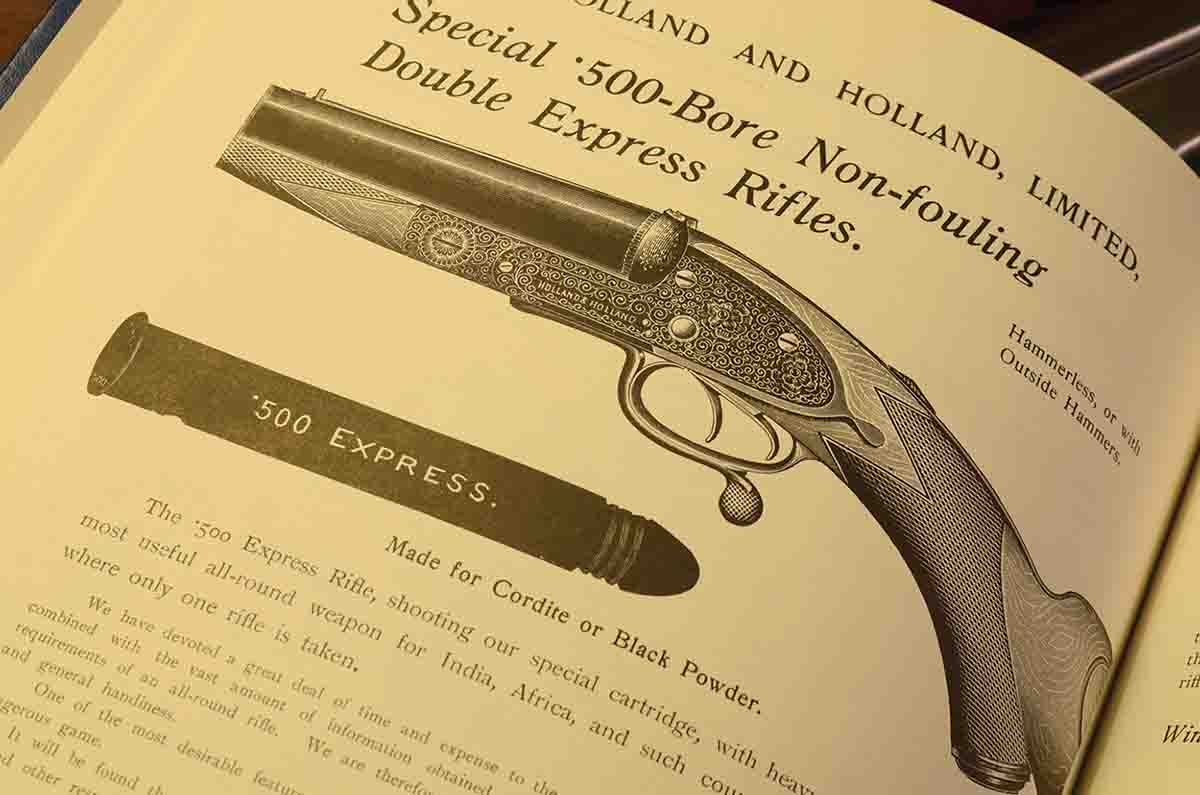
In any of them, a 300-grain bullet could be propelled at velocities up to about 1,750 fps, while a 700 grain (the heaviest recorded in the long Winchester round) started at 1,350 fps. As one might imagine, these projectiles were intended for entirely different purposes. A 300-grain .50 is an “express” bullet, at high velocity and usually with a hollow point for rapid expansion. A 700 grain would penetrate like there was no tomorrow.
In England, bullets were rarely that light – or that heavy. The normal range was 350 to 500 grains, at the usual black-powder velocities of 1,500 to 1,700 fps.
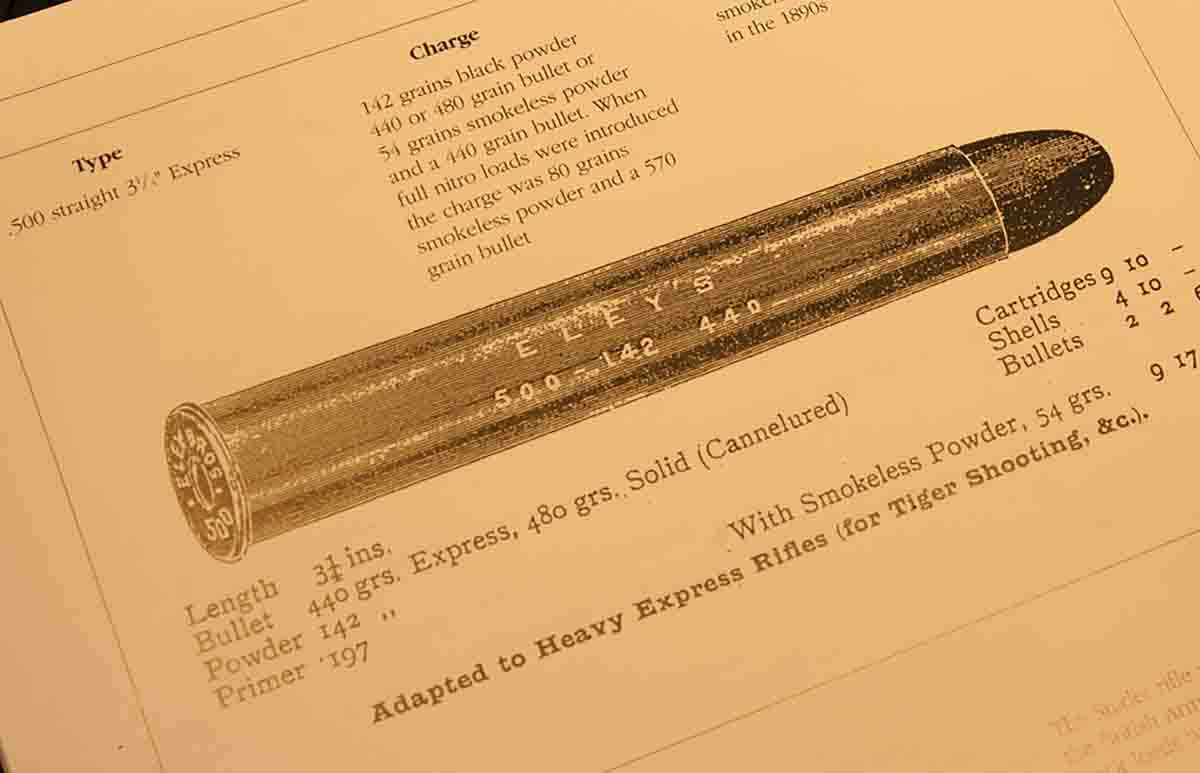
In terms of Africa and India, this made the .500 an “in-between” cartridge. The .500 Express 3¼ Inch with its 480-grain bullet at 1,700 fps was considered an excellent load for soft-skinned dangerous game, such as lions and tigers, but not adequate for elephant, Cape buffalo or gaur.
Jim Corbett, the famous hunter of man-eating tigers, began his career with a .500 black-powder rifle, but switched to a .450/.400 Nitro Express when smokeless powder took over.
In America, the .50 more or less died with the black-powder era; in England, it continued on as a nitro- express cartridge but led an odd life. As a black-powder round, the .500 was not big enough; as a nitro-express round, it was too big. The .500, it seemed, just couldn’t win – commercially, at least. On game, it rarely lost.
In America, even in the black-powder era, the .50s can be divided into two groups: those intended for single-shot rifles and long ranges, and those for repeaters – leverguns and slide actions.
The benchmark “big fifty” in the U.S. was the Sharps, using a 2.5-inch case, and variously designated .50-90 to .50-110, depending on the bullet and powder charge. It was listed in the first Sharps catalog (1872) and played a major role in the destruction of the buffalo. Very likely, this was the “big fifty” of Billy Dixon fame. Legendary though they were, Sharps dropped its .50s, except on special order, when it adopted its range of .45s around 1878.
Winchester was the major American company that not only developed a number of .50s, but also stuck with them into the smokeless-powder era. The first was the .50-95, a short, rimmed, bottlenecked cartridge introduced in 1879 for the Winchester ’76 lever action. It fired a 300-grain bullet at 1,560 fps. The Colt Lightning slide-action rifle was also available in this chambering. This was a hefty self-defense round and certainly deadly on game at short range, but it was not a long-range hunting cartridge by any means.
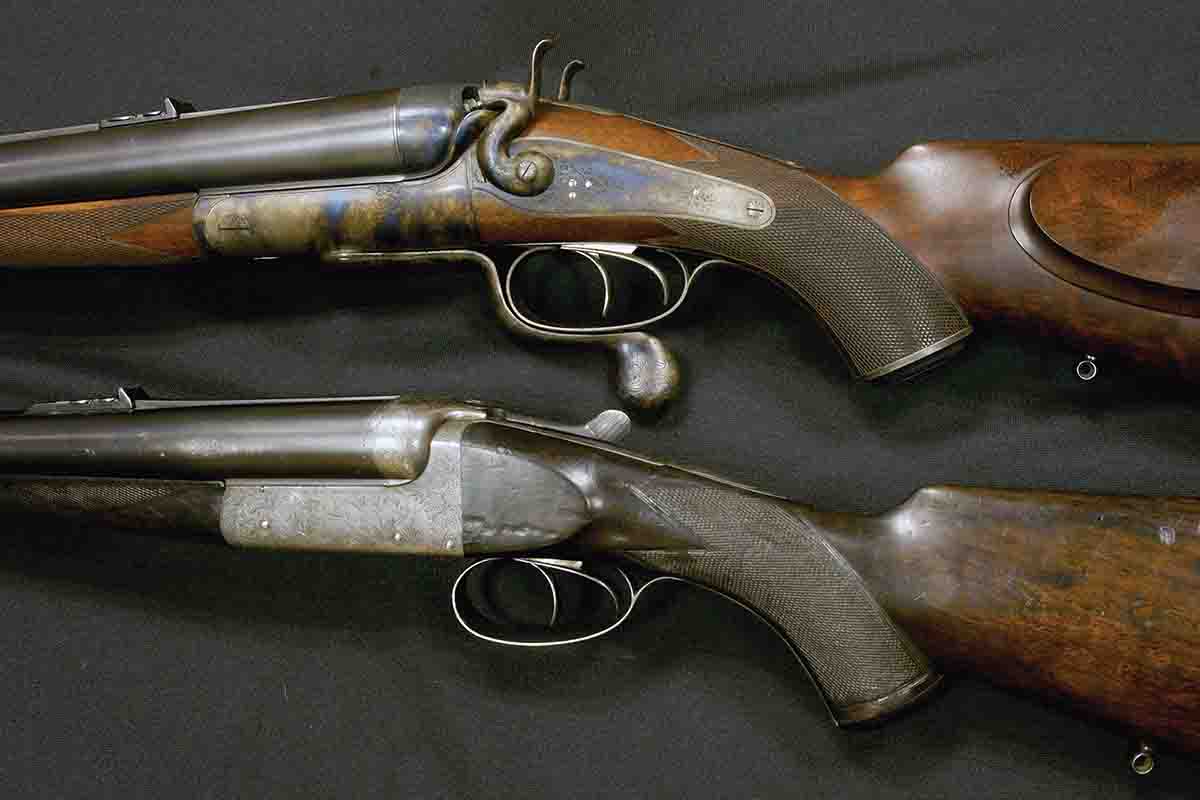
For the next 50 years, not much happened with .50-caliber rifles except for a niche interest in long-range sniper rifles chambered for the .50 BMG. At 25 to 30 pounds, these rifles definitely fell into the category of “special interest” and demand a section all to themselves. More mainstream was the interest related to cowboy action shooting, beginning in the 1990s, using either original arms from the Old West era or replicas thereof.
In England after 1898, the .500 languished compared to cartridges like the .470, but they did exist. Some gunmaker – no one knows who – converted the .500 3-inch case to smokeless powder, loaded it with a 570-grain jacketed bullet and created the .500 Nitro Express. It also existed in 3¼-inch form, but these were outnumbered by the shorter case by about 10 to one.
John Hunter, the famous Kenya professional, carried a .500 and wrote about it in his books, but no one else really championed it. It fell into that “in-between” category. It is really too big for anything except Cape buffalo, rhino and elephant, and those who wanted something bigger than the .470 for that purpose usually chose a .577. The reasons for this are logistical rather than ballistic.
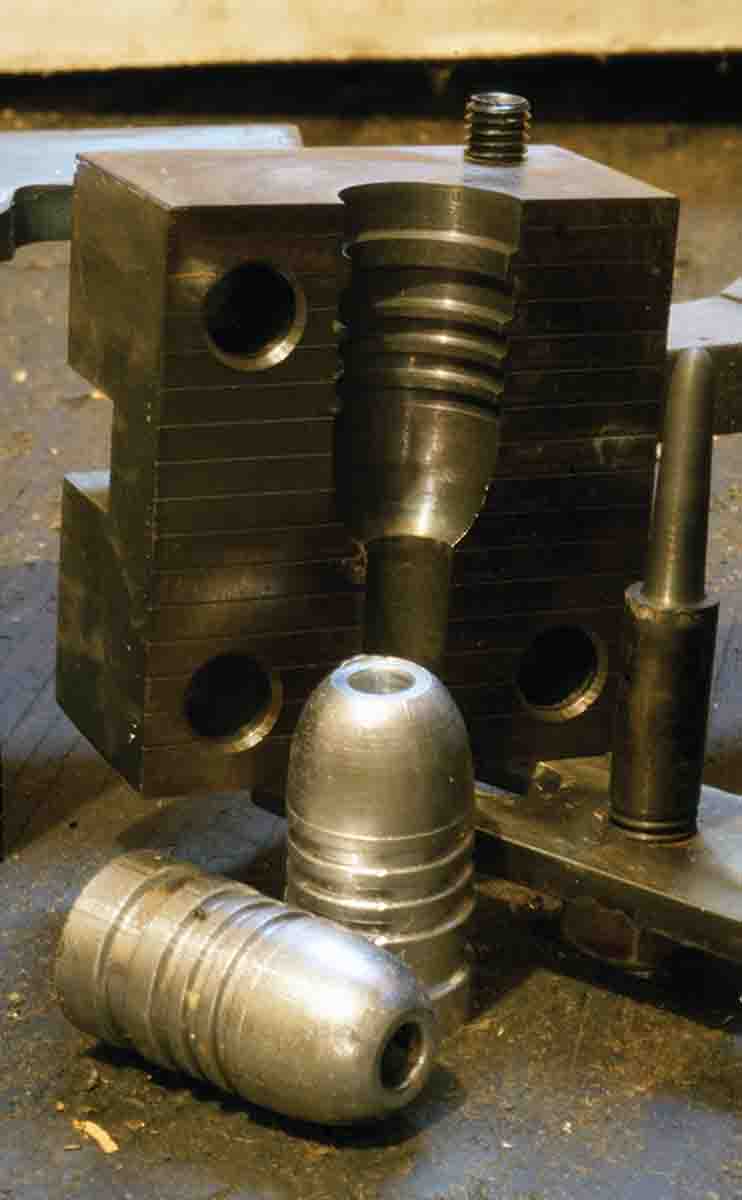
The .500 NE rifles usually weighed 12 pounds-plus when they only needed to weigh about 10, so they were too heavy for everyday use. Yet, if you wanted a really hard-hitting backup, they could not compare to a .577. This applied to double rifles and single shots.
Two gunmakers attempted to adapt .500 NE power to a bolt action. Both came along in the 1920s in England but by vastly different routes. George Gibbs of Bristol, one of England’s foremost rifle specialists, developed the .505 Gibbs to fit into the magnum Mauser action, which Rigby had helped pioneer, with Mauser, for its massive .416 Rigby cartridge in 1911. The Gibbs round resembles a .416 Rigby scaled up, much as a heavyweight boxer is a scaled up middleweight. It fired a 525-grain (.505 diameter) bullet at 2,300 fps. For the record, almost all other .500s, on both sides of the Atlantic, use a bullet of .509 to .512 diameter, depending on whether it is jacketed or cast.
The other cartridge was the .500 Jeffery. In reality, it was developed in Germany by riflemaker August Schüler. After 1918, the Treaty of Versailles restricted the manufacturing of certain rifle actions in Germany. There were, however, millions of military Mauser 98s, and Schüler set out to create a genuine elephant cartridge that could be shoehorned into the standard 98.
The result was a squat, compact round with a rebated rim (to fit the 98 bolt face), near-parallel walls, a sharp shoulder and very short neck. The company fitted the rifle with an extended magazine that held two or three rounds, plus one in the chamber. At 8 to 9 pounds, the recoil was unbelievable, but it was an affordable elephant rifle for the average colonial farmer.
In London, W.J. Jeffery adopted the cartridge as its own, called it the .500 Jeffery, and began offering it in more conventional elephant rifles. It fired a 535-grain bullet at 2,400 fps, giving a muzzle energy of 6,800 foot-pounds and was the most powerful magazine-rifle cartridge until the advent of the .460 Weatherby Magnum in 1958. For years, ammunition was only made in Germany, but it seems to have been acceptable. Taylor spoke highly of it and, especially, of a rifle owned by his friend, the Rhodesian hunter Fletcher Jamieson.
Although the .500 Jeffery and .505 Gibbs are legendary, the legend outweighs the numbers. Very few were made – perhaps 100 or less of each. Since their comeback, more have been built in the last 10 years than in the previous 80.
Since 1995, with the exploding interest in double rifles, both old and new, the .500 NE 3 Inch has gained a new lease on life and is now a standard chambering in such rifles as the Krieghoff Classic and the Merkels. English gunmakers are probably producing more .500s now than ever before, in relative terms.
This is due partly to simple boredom – how much can you do with a .470? – and partly to the .500’s undeniable ballistic excellence. And, given the number of .510-inch jacketed bullets available and the many different moulds for cast bullets, the owner of a .500 can have a lot of fun loading and shooting anything he buys.
The same is true in the U.S., where once again there are single-shot rifles in large calibers, as well as a number of imported replicas, used for everything from cowboy action to black-powder cartridge silhouette and long-range target shooting.

